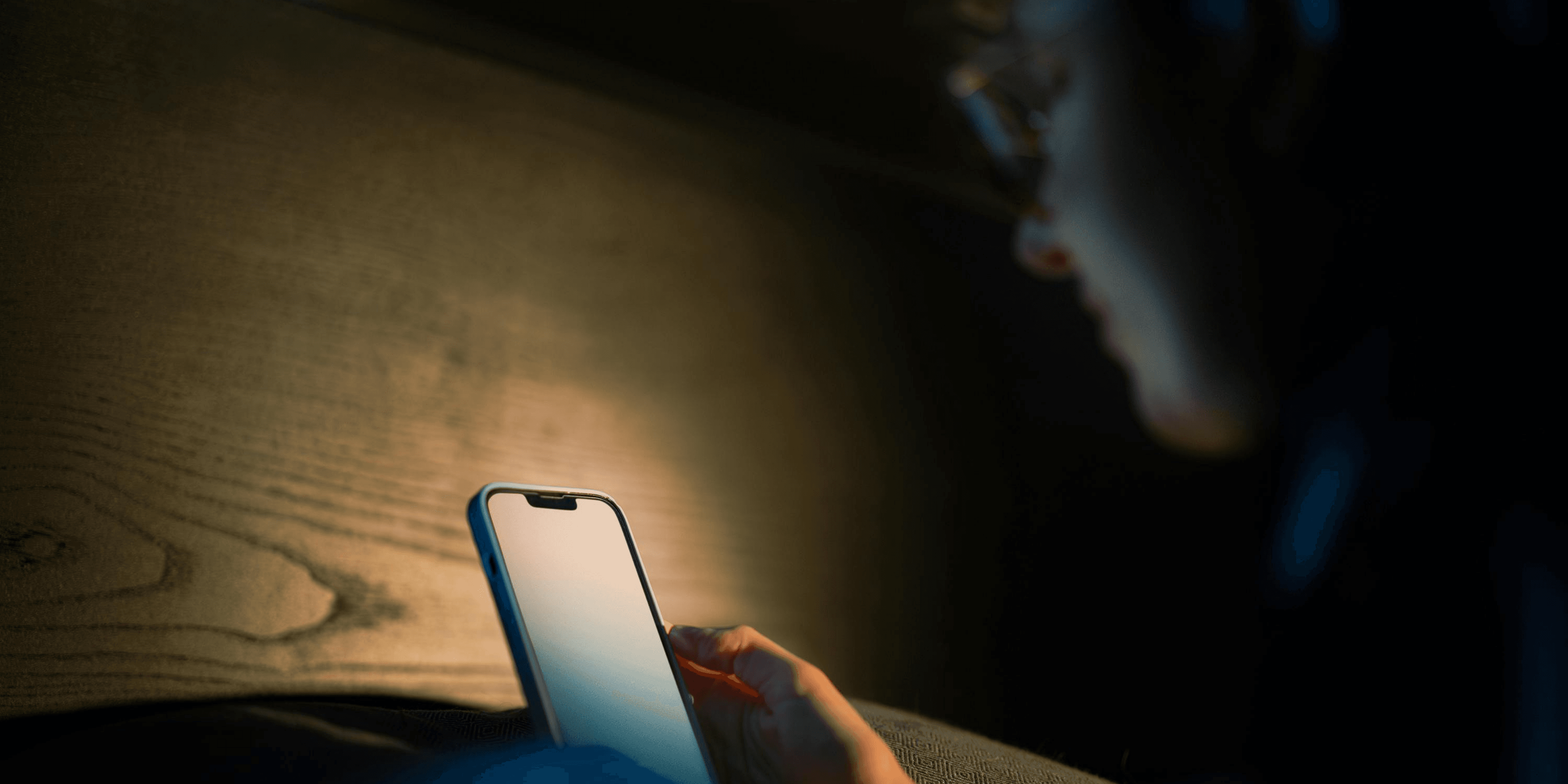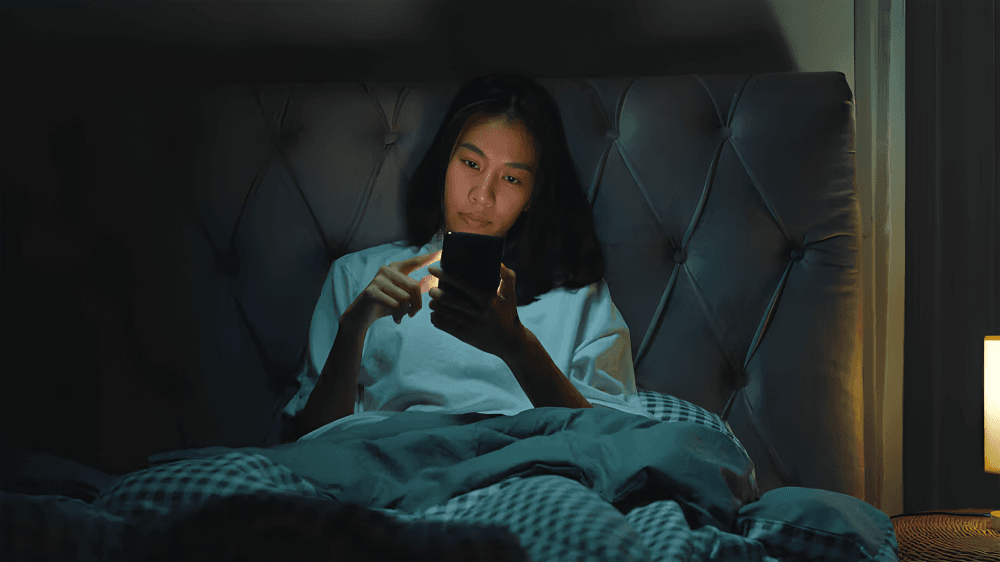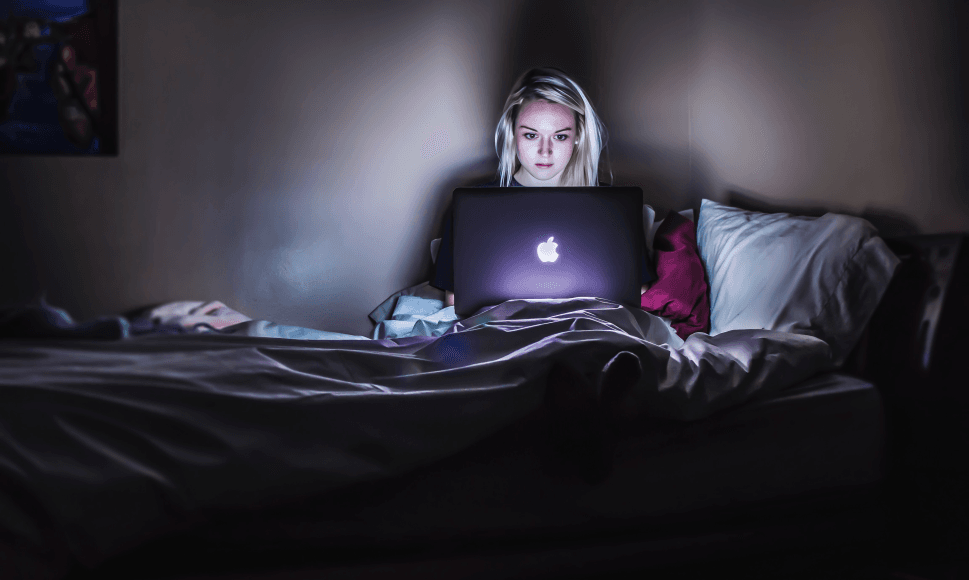
“
In today's digital era, blue light and sleep quality have become closely linked, as screen exposure continues to rise across all age groups. Blue light is a high-energy visible light emitted by electronic devices like smartphones, tablets, and computers. While helpful during daylight hours, its influence after sunset disrupts the body's circadian rhythm—an internal clock regulating our sleep-wake cycles. 1
1
”
The renowned neurologist Dr. Charles Czeisler discovered how exposure to blue light suppresses melatonin—the hormone responsible for sleep—by signaling to the brain that it is still daytime outside. 1
Blue light wavelengths, between 400–495 nanometers, are especially potent at interfering with melatonin production, confusing the brain and making it harder to fall asleep after screen use at night. 2

Studies show using phones or tablets within one hour of bedtime reduces REM sleep, which is critical for memory processing, emotional balance, and cellular recovery during the sleep cycle.
Blue light has been found to delay the onset of melatonin by as much as 90 minutes, which causes prolonged sleep latency and reduces total sleep time among both adults and teens. 3
Sleep specialists recommend avoiding screen exposure two hours before bed, as even short bursts of blue light can reset the circadian clock and suppress melatonin for extended periods. 4
Research indicates children exposed to screen-based blue light before bedtime tend to have poorer academic performance due to fragmented sleep and decreased cognitive function in the morning. 5
Using “night shift” or blue light filtering apps on smartphones has been shown to reduce eye strain, but it still does not fully eliminate melatonin suppression caused by backlit displays. 6
Unlike red or amber hues, blue light stimulates melanopsin receptors in the eye’s retina, which directly impact the brain's master clock and delay signals to initiate the sleep process. 7

Shift workers exposed to blue light during their evening or night schedules often experience insomnia and fatigue due to disrupted sleep architecture and delayed melatonin release.
Blue light affects not just sleep but also thermoregulation, preventing the normal drop in body temperature required for sleep onset and leading to increased tossing and turning in bed. 8
Light-sensitive cells in the retina, called intrinsically photosensitive retinal ganglion cells, respond strongly to blue light and send wake-up signals directly to the brain’s hypothalamus. 9
Researchers discovered that even dim blue light—such as from a digital alarm clock—can suppress melatonin and increase sleep fragmentation, especially in poor sleepers. 10
Individuals with delayed sleep phase syndrome are particularly sensitive to blue light exposure, often needing light restriction and therapy to align their sleep cycles with societal schedules. 11
A 2019 study revealed that adolescents who used social media before bed had poorer sleep hygiene, longer screen time, and reduced melatonin levels compared to peers who logged off earlier. 12
Unlike natural sunlight, which shifts in color temperature throughout the day, screens emit constant blue light, confusing the body’s internal rhythm and preventing a gradual transition into sleep. 13

Blue light disrupts the pineal gland’s natural rhythm, which governs melatonin release; this leads to increased wakefulness even during the night when the body expects darkness.
Exposure to blue light during sleep—such as falling asleep with a television or laptop on—can cause micro-arousals that lower sleep efficiency and reduce total rest time. 14
Filtering lenses like amber-tinted glasses have been proven effective in reducing blue light’s impact on melatonin, promoting better sleep quality when worn two hours before bedtime. 15
Harvard researchers confirmed that nighttime blue light exposure not only delays sleep but may increase risks of chronic conditions like depression, diabetes, and even obesity by altering hormone regulation. 16
The ancient Greek physician Hippocrates believed in the healing power of natural cycles; modern science supports this by showing that harmony with light-dark patterns is essential for deep, quality sleep. 17


